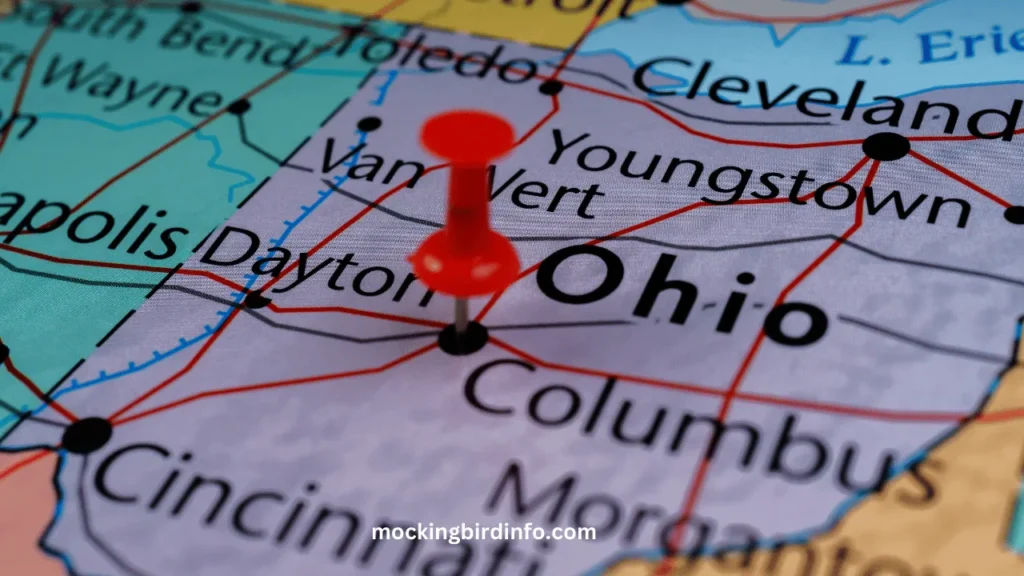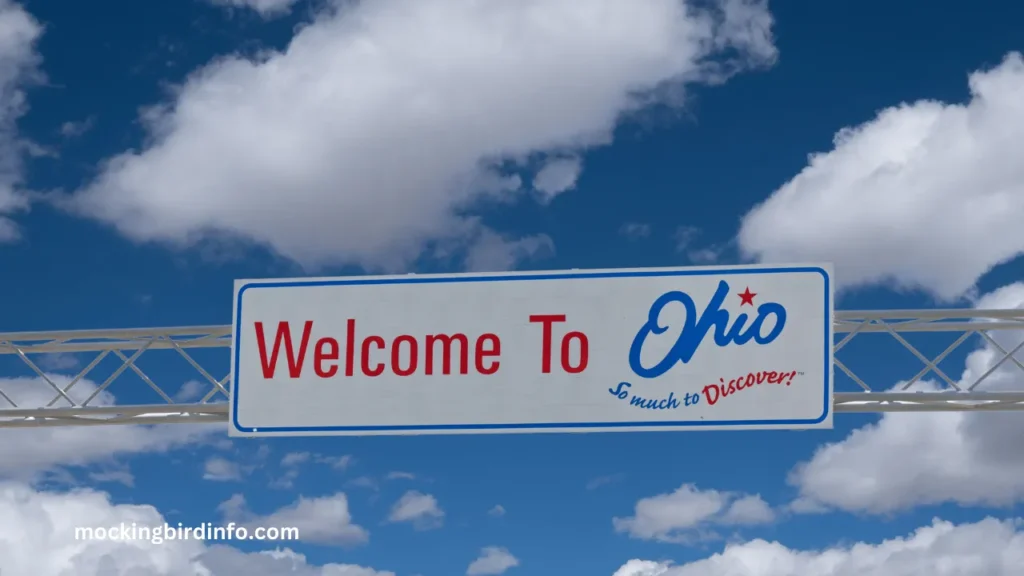Mockingbirds are some of the most fascinating birds you’ll encounter, known for their ability to imitate other birds and even mechanical sounds. Imagine walking through a neighborhood and hearing a bird sing the distinctive calls of robins, crows, and even the distant hum of a car alarm.
You might think, “Could that be a mockingbird?” But if you live in Ohio, you might be wondering if these talented birds are part of your local wildlife. Although mockingbirds are often associated with the southern United States, their presence in Ohio has sparked interest among birdwatchers and nature lovers alike.
While mockingbirds are not native to Ohio, they have found their way into the state through human intervention and have managed to establish themselves in certain areas. This raises the question: how did they get there, and what is their impact on Ohio’s ecosystems?
In this article, we will explore the history of mockingbirds in Ohio, their current distribution, and how they’ve managed to thrive in this northern state. We’ll also take a closer look at the effects they have on local wildlife and what their presence means for Ohio’s biodiversity.
Ohio’s mockingbird population is not something that many people are aware of, but it is an important piece of the state’s evolving birdlife story. Understanding how these birds have adapted to Ohio’s urban and suburban environments will provide valuable insight into the ever-changing relationship between wildlife and human development.
Stay with us as we delve into the mockingbird’s journey, its current standing in Ohio, and its potential impact on the local environment.

Contents
Native Range of Mockingbirds
Mockingbirds, specifically the northern mockingbird (Mimus polyglottos), are native to the southern United States, primarily inhabiting areas from the Southeast to Southwest regions.
This bird is well-adapted to the warmer climates, often found in open woodlands, scrublands, and urban areas. Known for their remarkable ability to mimic the calls of other birds, they are a familiar sound in many parts of the U.S. where they are abundant.
The southern range of mockingbirds provides them with favorable conditions, such as mild winters and abundant food sources, including insects, fruits, and berries. These conditions allow mockingbirds to thrive year-round in these areas.
However, their ability to spread into the northern parts of the country has been limited by several factors, primarily cold winters, a lack of suitable habitat, and a decrease in food availability during colder months.
Despite these challenges, mockingbirds have been able to expand their range in recent decades, with populations increasing in parts of the Midwest and northern states. However, they still face constraints when it comes to harsher climates, where survival can be more difficult.
This has led many to believe that mockingbirds would not thrive in states like Ohio, but human intervention has paved the way for a different story.
Introduction to Ohio
The arrival of mockingbirds in Ohio can be traced back to human-assisted introduction, whether through the release of captive birds or accidental escapes from aviaries and collections.
Over time, these birds adapted to the changing environment and found themselves at home in the state’s urban and suburban areas. Ohio’s growing cities provided an ideal environment, with their abundance of food resources, mild winters, and man-made structures offering perfect nesting sites.
Mockingbirds have become particularly adept at living in urban environments, where their natural behavior—defending territories through vocalizations—blends well with the hustle and bustle of city life. Suburban areas, with their mixture of residential gardens, parks, and green spaces, have also proven to be a great fit for these adaptable birds.
They find plenty of food, including berries, insects, and scraps from human activity, allowing them to thrive even in areas that may not have been suitable for them just a few decades ago.
In fact, Ohio’s urban expansion and changes in land use have given mockingbirds the chance to flourish. The milder winters in recent years, as a result of climate change, have also contributed to their ability to endure colder temperatures, allowing them to survive in Ohio’s winter months, unlike their southern counterparts who might migrate away.

Current Distribution in Ohio
Today, mockingbirds are most commonly found in Ohio’s urban and suburban regions, particularly in cities like Cleveland, Columbus, and Cincinnati. These areas provide the perfect combination of food sources, safe nesting sites, and minimal natural predators.
The adaptability of mockingbirds to these environments has allowed them to settle in areas that were once inhospitable to them. In rural areas of Ohio, mockingbirds are far less common. The lack of open woodlands and natural scrublands that mimic their native habitats makes it harder for mockingbirds to establish stable populations.
Additionally, the absence of abundant food sources and nesting sites in rural environments limits their chances of survival. While urban areas can support larger numbers of mockingbirds, rural Ohio remains largely untouched by these birds.
There are also seasonal variations in the mockingbird’s distribution in Ohio. During the winter months, some mockingbirds may migrate further south, while others remain in Ohio, especially in mild winters where resources are still available.
In the spring and summer, mockingbirds are more visible as they engage in territorial behavior and courtship rituals, becoming more vocal and prominent in Ohio’s city parks and residential areas.
Impact on Ohio’s Ecosystem
The presence of mockingbirds in Ohio has led to both positive and negative consequences for the local ecosystem. One potential issue is their competition with native bird species for food resources and nesting sites.
Mockingbirds, with their territorial nature, may displace smaller native birds, such as sparrows or finches, by taking over prime nesting locations. Their aggressive behavior towards other birds, particularly during the breeding season, can lead to conflict and disruption among local avian populations.
Mockingbirds also pose a predation risk to smaller native birds. They have been known to target the eggs or young chicks of other species, adding an extra layer of challenge to the already difficult existence of smaller birds in Ohio. However, this predatory behavior is not as common as their more prominent mimicry and territorial defense activities.
On the positive side, mockingbirds contribute to Ohio’s ecosystem by acting as insectivores and seed dispersers. Their diet includes a variety of insects, which can help control insect populations and prevent overgrowth of certain pests.
Additionally, as they feed on fruits and berries, they help in the dispersal of seeds, promoting the growth of new plants and maintaining plant diversity across Ohio’s green spaces.
Conclusion:
While mockingbirds are not native to Ohio, their introduction and adaptation to the state have made them an important part of the local wildlife community. Their presence in Ohio, particularly in urban and suburban areas, has raised questions about the balance between human development and the natural world.
Though they have proven to be a successful species in Ohio, their impact on local ecosystems—both positive and negative—remains a subject of ongoing study.
Looking ahead, the future of mockingbirds in Ohio will likely depend on several factors, including climate change, urbanization, and the continued adaptability of the birds themselves.
As human development continues to shape the landscape, understanding how non-native species like mockingbirds interact with Ohio’s native wildlife is crucial for maintaining a healthy ecosystem.
The mockingbird’s story in Ohio is a testament to the resilience of birds and the complex relationship between wildlife and human activity. It also serves as a reminder that even in regions where these birds were once absent, they can find a way to thrive—showing us that nature’s adaptability is as strong as ever.
FAQs:
1. Are mockingbirds native to Ohio?
No, mockingbirds are not native to Ohio. They are native to the southern United States but have been introduced to Ohio over time.
2. How did mockingbirds end up in Ohio?
Mockingbirds were likely introduced to Ohio through human intervention, such as the release of captive birds or accidental escapes.
3. Where in Ohio can I find mockingbirds?
Mockingbirds are most commonly found in Ohio’s urban and suburban areas, particularly in cities like Cleveland, Columbus, and Cincinnati.
4. Do mockingbirds migrate in Ohio?
Yes, some mockingbirds migrate further south during the winter months, but others remain in Ohio, especially if the winters are mild.
6. What impact do mockingbirds have on Ohio’s ecosystem?
Mockingbirds can compete with native birds for resources, prey on smaller birds, and contribute to insect control and seed dispersal.








